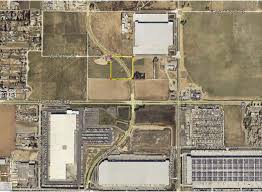City of Perris v. Stamper update
The California Supreme Court heard oral arguments yesterday morning in City of Perris v. Stamper, a case in which PLF filed an amicus brief to support landowners’ rights to just compensation for property takings.
At issue in the case is whether a city can impose a dedication requirement (i.e., if you want to build on your property, the city gets to take some of your land) to suppress the fair market compensation value of land the city wants to later take via eminent domain.
It is long-established in eminent domain law, however, that the effects of a project being accomplished through eminent domain are ignored when determining the compensation value of land being taken. This “project-effect” rule ensures that property owners get neither an unfair benefit nor detriment from the effects of an imminent eminent domain project.
In the past, California cities have tried to minimize the costs of eminent domain compensation by, for example, keeping property they intend to take zoned at lower valued uses than they would be otherwise. Since compensation is measured by pricing the land to be taken at its “highest and best use,” the easiest way to suppress that is to simply set the land’s “highest and best use” artificially low. California courts have seen through these tricks and require the compensation valuation to ignore the effect of zoning actions like these that are rightfully considered part of the project.
Of course, there’s always more than one way for a government to fleece a landowner.
Several years ago, the city of Perris, CA, decided to reroute a road through Richard Stamper and Douglas Robinson’s land to accommodate a Lowe’s distribution center going up nearby. Doing so would entail using eminent domain to take a swath of land constituting roughly 20% of the property. While the land was only being used for relatively low-value agriculture at the time, it was zoned to allow more valuable light industrial use. But, rather than pay for the value of the land at its highest and best use—its non-agriculture, light industrial use—the city came up with a scheme to pay for the land at its current, agriculture-use value.
Perris city ordinance requires that for property owners to develop any unimproved land, they must, as a precondition to getting a permit, give up to the city (or “dedicate”) any of their property that the city plan designates as a right-of-way. In advance of condemning the Stamper/Robinson land, the city amended its general plan to reflect the planned road reroute across their property. The city then argued that the land could not be valued at its light industrial use value for purposes of eminent domain compensation because, if the land were hypothetically developed to meet its highest use, it would conflict with the city plan and trigger the dedication requirement. That is, the city is trying to preclude paying for the land’s highest hypothetical compensation value by threatening to hypothetically take it for free.
The property owners argue that their compensation should reflect the higher industrial use value of the land and not the lower value caused by the effect of the dedication requirement, which should be considered part of the eminent domain project. However, even if the dedication requirement were somehow considered not part of the eminent domain project, the landowners argue, the city would still have to prove that the dedication requirement for the roadway satisfies the Nollan and Dolan requirements for development exactions. That means the dedication exaction here (total uncompensated forfeiture) must be in proportion to and designed to remedy some adverse side-effect of the proposed development.
We agree with the property owners that the city’s scheme is constitutionally out of line, so we filed an amicus brief to support their case. In our brief, we argued that allowing this type of scheme to suppress compensation value would let local governments snap up property at unlawful sub-market prices. Further, the hypothetical dedication requirement would violate the Nollan and Dolan rules that dedication requirements must have a substantial nexus and proportional relationship with the proposed development. It’s hard to think the court will find Nollan and Dolan satisfied where an exaction not only doesn’t relate to the hypothetical development, but precludes it entirely in service of taking land for an eminent domain project. On Monday I’ll post my impressions from yesterday’s oral arguments in the case.

